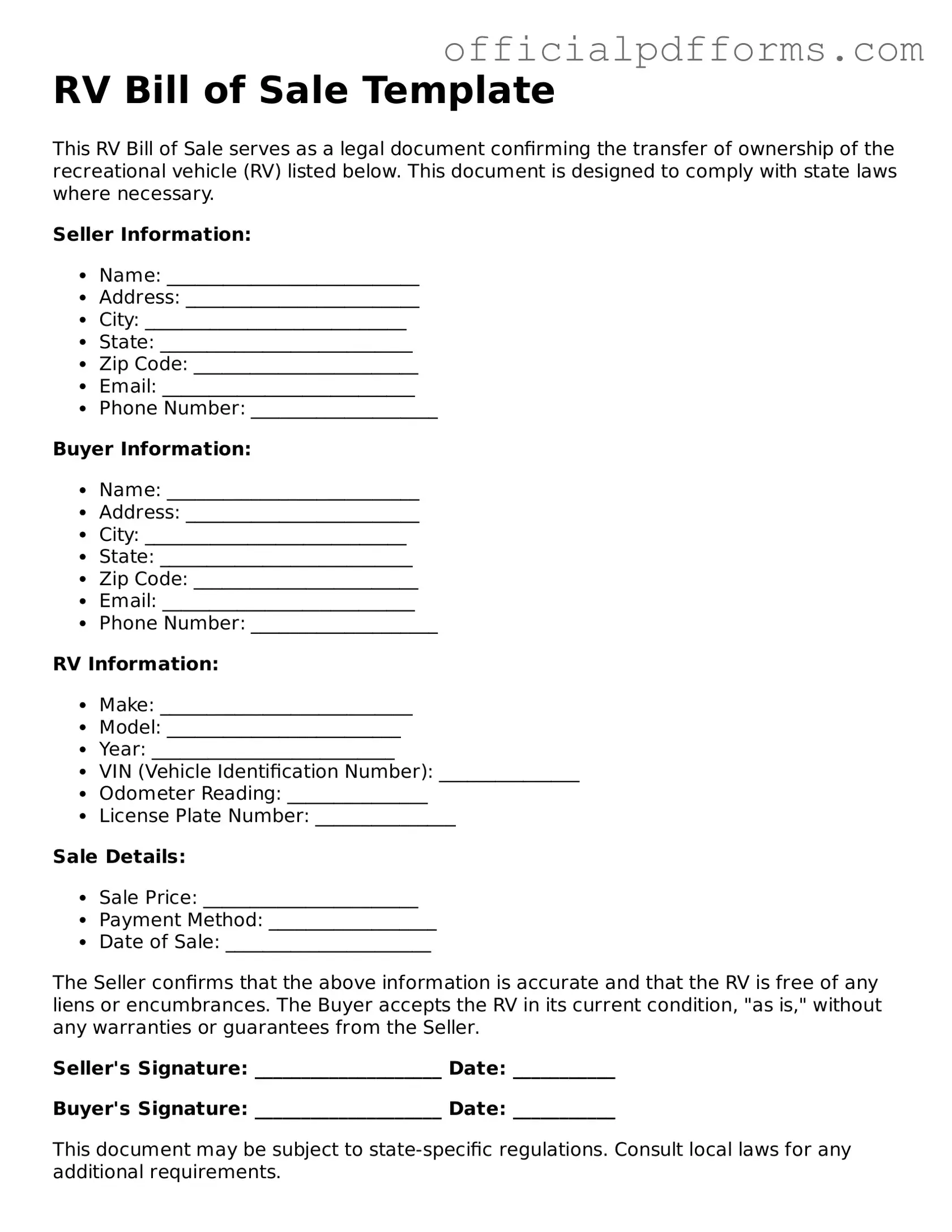Valid RV Bill of Sale Document
An RV Bill of Sale is a legal document that serves as proof of the sale and transfer of ownership of a recreational vehicle. This form includes essential details such as the buyer's and seller's information, the RV's specifications, and the sale price. Completing this form is crucial for both parties to ensure a smooth transaction and protect their rights.
Ready to fill out your RV Bill of Sale? Click the button below to get started!
Access Form Online
